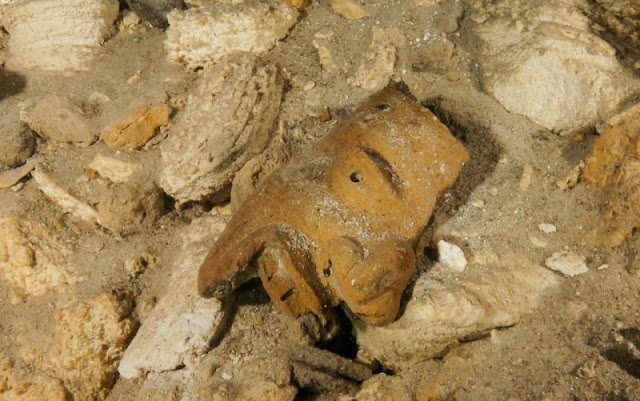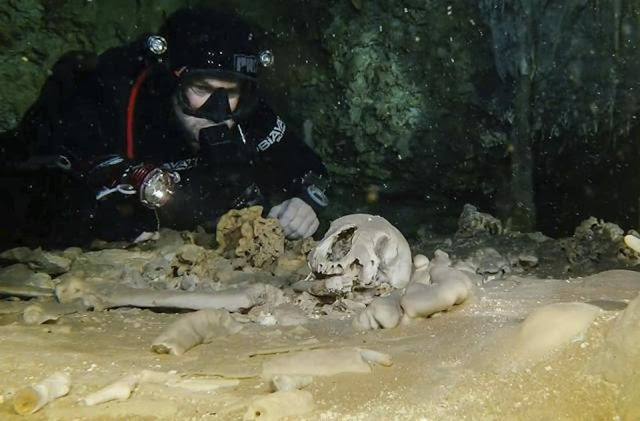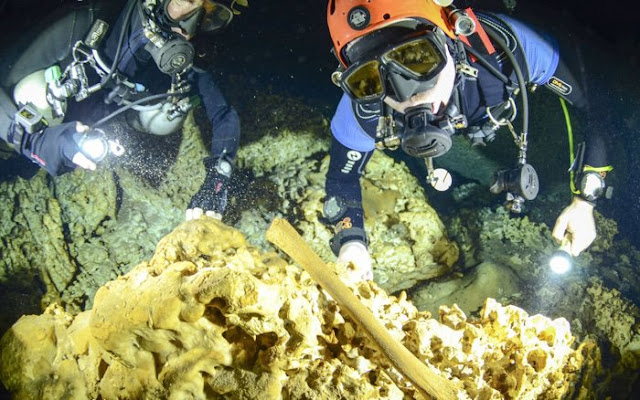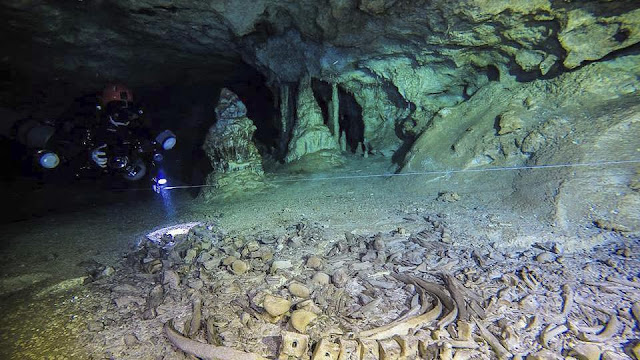Archaeologists exploring the word’s biggest flooded cave in Mexico have discovered ancient human remains at least 9,000 years old and the bones of animals who roamed the earth during the last Ice Age.
The Yucatan peninsula is studded with monumental relics of the Maya people, whose cities drew upon an extensive network of sinkholes linked to subterranean waters known as cenotes.
 |
| Remains of a mask in the Sac Actun underwater cave in Mexico's Quintana Roo state [Credit: GAM/INAH] |
Some cenotes acquired particular religious significance to the Maya, whose descendants continue to inhabit the region.
 |
| Remains of a Pleistocene bear from 2.5 million years ago, in the Sac Actun underwater cave in Quintana Roo state, Mexico [Credit: GAM/INAH] |
The cave’s discovery has rocked the archaeological world.
 |
| Researchers from Mexico's National Institute of Anthropology and History (INAH), say they have discovered 200 archaeological sites in the cave system [Credit: GAM/INAH] |
De Anda is also director of the Gran Acuifero Maya (GAM), a project dedicated to the study and preservation of the subterranean waters of the Yucatan peninsula.
According to the INAH, water levels rose 100 meters at the end of the Ice Age, flooding the cave system and leading to “ideal conditions for the preservation of the remains of extinct megafauna from the Pleistocene.”
The Pleistocene geological epoch, the most recent Ice Age, began 2.6 million years ago and ended around 11,700 years ago.
Source: Reuters [February 20, 2018]

